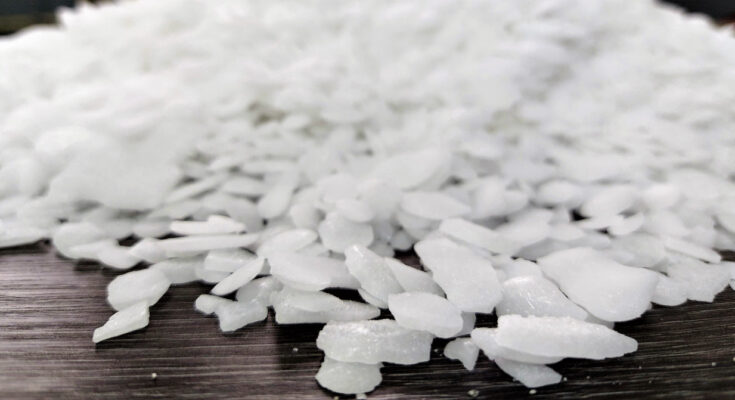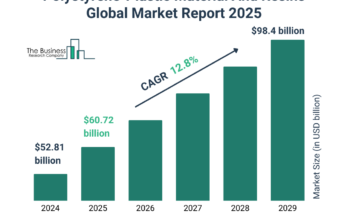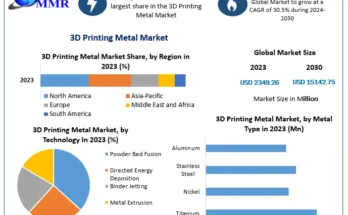India Maleic Anhydride Market achieved a total market volume of 5.34 thousand Metric Tonnes in 2023 and is poised for strong growth in the forecast period, with a projected Compound Annual Growth Rate (CAGR) of 3.65% through 2029. Maleic anhydride, a versatile chemical compound with a range of industrial applications, plays a significant role in the production of resins, coatings, and various chemical intermediates. As a crucial intermediate, maleic anhydride contributes significantly to India’s chemical and industrial landscape.
The Indian maleic anhydride market has witnessed substantial growth due to the country’s expanding industrial base, the demand for resins and coatings, and its pivotal role in the production of various chemical products. The Indian maleic anhydride market has experienced significant growth in recent years. Maleic anhydride is a versatile chemical with applications ranging from the production of unsaturated polyester resins to the synthesis of chemical intermediates. Its importance is underscored by its role in various industries, from plastics to agriculture.
The production of unsaturated polyester resins is a significant driver of the maleic anhydride market in India. Maleic anhydride serves as a crucial raw material in the synthesis of these resins used in various industrial applications, including the manufacturing of fiberglass-reinforced plastics. The expansion of India’s construction and automotive sectors has contributed to the demand for unsaturated polyester resins. Maleic anhydride is used in the production of agrochemicals and various chemical intermediates, including malic acid and fumaric acid.
The growth of the agrochemicals and specialty chemicals sectors has significantly increased the demand for maleic anhydride. Maleic anhydride finds application in the production of coatings and adhesives. As India’s construction and automotive industries grow, the demand for coatings and adhesives has increased. Maleic anhydride is a corrosive and toxic chemical that requires careful handling and storage. Adherence to stringent safety protocols is crucial to mitigate these risks.
The production and use of maleic anhydride can raise environmental concerns, particularly in terms of emissions and waste disposal. Regulatory compliance and responsible disposal are vital challenges. There is a growing emphasis on adopting green and sustainable practices in maleic anhydride production. The industry is exploring cleaner and more environmentally friendly production methods. Research and development efforts are directed towards the development of bio-based maleic anhydride, potentially influencing the demand for sustainable alternatives.
Download FREE Sample Report @ https://www.techsciresearch.com/sample-report.aspx?cid=20752
The future outlook for the Indian maleic anhydride market remains positive. As India’s construction, automotive, and specialty chemicals sectors continue to grow, the demand for maleic anhydride is expected to persist. The industry is also likely to adapt to emerging trends, with a strong focus on green and sustainable practices in production and the development of bio-based alternatives. In conclusion, the Indian maleic anhydride market is a vital player in supporting the country’s construction, automotive, and specialty chemicals sectors. As India advances on its path of industrialization and environmental awareness, the market is poised to evolve and thrive, reinforcing its significance in the chemical and manufacturing landscape of the nation.
Key Market Drivers
Increasing Use of Maleic Anhydride for Production of Unsaturated Polyester Resins Propels Indian Maleic Anhydride Market Growth
The Indian maleic anhydride market is experiencing notable growth, primarily driven by the increasing demand for the production of unsaturated polyester resins (UPRs). Maleic anhydride, a versatile chemical compound, plays a pivotal role in the synthesis of UPRs, contributing to the expansion of India’s maleic anhydride market.
One of the key factors fueling the surge in demand for maleic anhydride in India is its essential role as a key precursor in the production of UPRs. Unsaturated polyester resins are a class of thermosetting polymers widely used in various industries, including construction, automotive, marine, and manufacturing. UPRs are renowned for their versatility, durability, and resistance to corrosion, making them vital for a wide range of applications.
Maleic anhydride serves as a critical component in the synthesis of UPRs. It undergoes a reaction with a variety of diols or polyols, such as propylene glycol and ethylene glycol, to form the backbone of UPRs. This reaction results in a polymer that can be further modified and customized to meet specific performance requirements. UPRs derived from maleic anhydride are used to manufacture composite materials, fiberglass products, coatings, and a range of molded and laminated components.
The construction industry is one of the major consumers of UPRs. These resins are used to produce composite materials for building and infrastructure applications. UPR-based composites are highly valued for their strength-to-weight ratio, which makes them ideal for reinforcing concrete structures, producing lightweight panels, and enhancing the durability of construction materials. As India witnesses continued growth in construction and infrastructure development, the demand for UPRs, and thus maleic anhydride, is on the rise.
Moreover, the automotive sector relies on UPRs for various applications, including manufacturing body panels, bumpers, and interior components. UPRs provide automotive parts with high strength and resistance to corrosion, contributing to vehicle safety and longevity. The growth of the automotive industry in India, driven by increased consumer demand, innovation, and sustainability goals, underscores the demand for UPRs derived from maleic anhydride.
The growth of India’s composite industry, which is closely linked to UPR production, is another significant factor driving the demand for maleic anhydride. Composites are widely used in various sectors, including aerospace, wind energy, and sports equipment manufacturing. As India aims to promote sustainability and advanced manufacturing, composites derived from maleic anhydride are likely to play a central role in these industries.
In conclusion, the increasing use of maleic anhydride for the production of UPRs, driven by the versatile applications of UPRs in construction, automotive, marine, manufacturing, and consumer goods industries, is a significant driving force behind the growth of the maleic anhydride market in India. Maleic anhydride’s crucial role in UPR synthesis positions it as a fundamental component in various industries, supporting innovation, sustainability, and economic growth. As India continues to advance and diversify its industrial landscape, the demand for maleic anhydride is expected to remain strong, contributing to the country’s position as a key player in the global market and the facilitation of innovative and high-quality products across various sectors.
Key Market Players
- Meru Chem Pvt. Ltd.
- Central Drug House (P) Ltd.
- Mitansh Chemicals International Private Limited
- M. K. Industrial Corporation
- Pon Pure Chemicals Group
- Thirumalai Chemicals Ltd
- I G Petrochemicals Limited
Rising Demand of Maleic Anhydride-based Paint and Coating from Construction and Automotive Industries Propels India’s Maleic Anhydride Market Growth
The Indian maleic anhydride market is experiencing robust growth, primarily driven by the increasing demand for maleic anhydride-based paint and coatings, particularly from the construction and automotive industries. Maleic anhydride, a versatile chemical compound, serves as a crucial ingredient in the synthesis of various paints, coatings, and resins, contributing to the expansion of India’s maleic anhydride market.
Download FREE Sample Report @ https://www.techsciresearch.com/sample-report.aspx?cid=20752
One of the key factors behind the surge in demand for maleic anhydride in India is its essential role in the production of alkyd resins. Alkyd resins are widely used in the formulation of paints and coatings due to their excellent adhesion, durability, and versatility. These resins can be modified to suit specific applications, and they provide a smooth and glossy finish when used in various coating formulations.
Furthermore, the automotive industry heavily relies on maleic anhydride-based coatings for vehicles. These coatings are applied to various automotive components, including the vehicle’s body, engine parts, and interior surfaces. Maleic anhydride-based coatings provide a protective layer that enhances the appearance of the vehicle and offers corrosion resistance, ensuring the longevity of automotive components. As the automotive sector in India continues to grow, driven by increasing consumer demand, technological advancements, and sustainability goals, the demand for maleic anhydride-based coatings is expected to increase.
In addition to the construction and automotive industries, maleic anhydride-based coatings find applications in industrial and protective coatings. These coatings are used for a wide range of applications, from machinery and equipment to storage tanks and pipelines. The protective properties of maleic anhydride-based coatings make them indispensable in safeguarding industrial assets and infrastructure from environmental factors and corrosion. As various industrial sectors in India expand and upgrade their facilities, the demand for high-performance coatings remains strong.
The growth of India’s paint and coatings industry, driven by increased infrastructure development, renovation projects, and the automotive sector’s expansion, is a significant factor contributing to the demand for maleic anhydride. The Indian government’s focus on the construction and automotive sectors as key drivers of economic growth further supports this demand, emphasizing the need for high-quality and innovative coatings in these industries.
In conclusion, the rising demand for maleic anhydride-based paints and coatings, primarily from the construction and automotive sectors, is a significant driving force behind the growth of the maleic anhydride market in India. Maleic anhydride’s pivotal role in the formulation of coatings and adhesives positions it as a fundamental component in various industries, promoting innovation, sustainability, and economic growth. As India continues to advance and diversify its industrial landscape, the demand for maleic anhydride is expected to remain strong, contributing to the country’s position as a key player in the global market and the facilitation of high-quality and durable coatings across multiple sectors.
Growing Demand as Agrochemicals and Chemical Intermediates is Propelling the India Maleic Anhydride Market Growth
The Indian maleic anhydride market is experiencing significant growth, primarily driven by the increasing demand for maleic anhydride in the production of agrochemicals and chemical intermediates. Maleic anhydride, a versatile chemical compound, plays a pivotal role in the synthesis of various agrochemicals and serves as a key intermediate in the production of other chemical compounds, contributing to the expansion of India’s maleic anhydride market.
One of the key factors contributing to the surge in demand for maleic anhydride in India is its crucial role in the manufacturing of pesticides and herbicides. These agrochemicals are essential for crop protection, as they help farmers combat pests, diseases, and weeds, ultimately ensuring higher agricultural yields and food security. Maleic anhydride serves as a building block in the synthesis of active ingredients in these agrochemicals, contributing to their effectiveness and performance. As India grapples with the challenge of feeding its large and growing population, the need for agrochemicals and, by extension, maleic anhydride, continues to rise.
Furthermore, maleic anhydride is employed as a chemical intermediate in the production of various compounds used in the chemical industry. These chemical intermediates serve as precursors in the synthesis of a wide range of chemical products, including resins, plastics, and specialty chemicals. The versatility and flexibility of maleic anhydride in chemical synthesis make it a vital component for various industrial applications.
In conclusion, the growing demand for maleic anhydride in India, driven by its essential role in the production of agrochemicals and chemical intermediates, positions it as a fundamental component in various industries. Maleic anhydride’s versatility in chemical synthesis aligns with India’s industrial advancement and contributes to the country’s position as a key player in the global market, facilitating the production of high-quality agrochemicals, chemicals, and intermediates across various sectors.
Key Market Challenges
Increasing Competition from Foreign Players
Increasing competition from foreign players is a significant obstacle hindering the growth of the India Maleic Anhydride market. Maleic anhydride is a crucial chemical used in various industries, including chemicals, plastics, and resins. While the demand for maleic anhydride is steadily rising in India, the market faces challenges from international manufacturers who can offer competitive pricing, often due to lower production costs and well-established supply chains.
Related Reports
Insulation Products Market | [2028] Exploring Growth, Potential, and Future,Trends
Saudi Arabia Hydroponics Market [2029] – Analysis, Trends, & Insights
Saudi Arabia Organic Farming Market – Future, Scope, Trends [Latest]
Table of Content-India Maleic Anhydride Market
- Product Overview
1.1. Market Definition
1.2. Scope of the Market
1.2.1. Markets Covered
1.2.2. Years Considered for Study
1.2.3. Key Market Segmentations
- Research Methodology
2.1. Objective of the Study
2.2. Baseline Methodology
2.3. Key Industry Partners
2.4. Major Association and Secondary Sources
2.5. Forecasting Methodology
2.6. Data Triangulation & Validation
2.7. Assumptions and Limitations
- Executive Summary
3.1. Overview of the Market
3.2. Overview of Key Market Segmentations
3.3. Overview of Key Market Players
3.4. Overview of Key Regions/Countries
3.5. Overview of Market Drivers, Challenges, and Trends
- Voice of Customers
- Impact of COVID-19 on India Maleic Anhydride Market
- India Maleic Anhydride Market Outlook
6.1. Market Size & Forecast
6.1.1. By Value & Volume
6.2. Market Share & Forecast
6.2.1. By Raw Material (N-butane, Benzene)
6.2.2. By Application (Unsaturated Polyester Resins (UPR), 1,4-BDO, Lubricating Oil Additives, Copolymers, Food Additives, Others)
6.2.3. By Region (North, South, East, West)
6.2.4. By Company (2022)
6.3. Product Market Map
- North India Maleic Anhydride Market Outlook
7.1. Market Size & Forecast
7.1.1. By Value
7.2. Market Share & Forecast
7.2.1. By Raw Material
7.2.2. By Application
- South India Maleic Anhydride Market Outlook
8.1. Market Size & Forecast
8.1.1. By Value
8.2. Market Share & Forecast
8.2.1. By Raw Material
8.2.2. By Application
- East India Maleic Anhydride Market Outlook
9.1. Market Size & Forecast
9.1.1. By Value
9.2. Market Share & Forecast
9.2.1. By Raw Material
9.2.2. By Application
- West India Maleic Anhydride Market Outlook
10.1. Market Size & Forecast
10.1.1. By Value
10.2. Market Share & Forecast
10.2.1. By Raw Material
10.2.2. By Application



